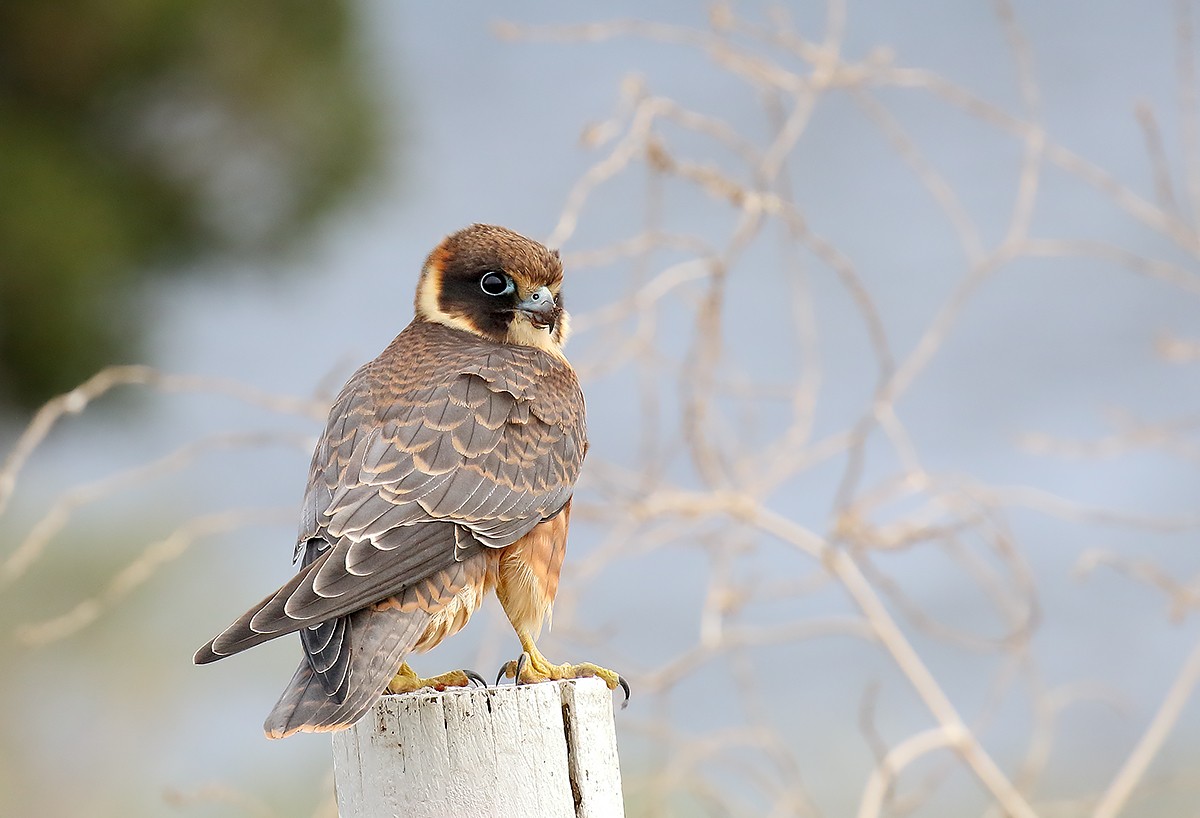Australian Hobby
A species of True Falcons Scientific name : Falco longipennis Genus : True Falcons
Australian Hobby, A species of True Falcons
Botanical name: Falco longipennis
Genus: True Falcons
Content
Description General Info
Description
Smaller than other falcons, the Australian hobby is relatively slender and long winged. Its plumage varies in colour depending on sex, age and environment with a darker form in humid areas and a lighter form in drier environments. Generally the hobby displays a black cap and mask with a whitish forehead and half-collar. Underparts can be blue-grey or rufous and streaked darker. The cere in adults is a pale yellowish grey, the eye ring is pale blue, the eyes are brown and the feet are dull yellow. Females are larger in size between 34 – 35.5 cm and males are generally between 30 – 32 cm in length with a wing span between 66 – 87 cm. The Australian hobby is easily confused with the peregrine falcon (Falco peregrinus) however the hobby is more slender, with longer and thinner wings, and is a less powerful flyer. 
Size
35 cm
Nest Placement
Tree
Feeding Habits
Australian Hobby preys primarily on small to mid-sized birds and various insects. Australian Hobby prefers to avoid larger, defensive prey, focusing instead on species like starlings and sparrows. Australian Hobby also consumes insectivorous bats, beetles, and grasshoppers, utilizing agile aerial hunting techniques.
Habitat
Australian Hobby are versatile in their habitat preferences, ranging across varied landscapes, including open woodlands, savannas, and even tree-abundant urban environments. Their habitat can extend from sea level up to 1000 meters elevation in broader geographical regions, occasionally reaching 1500 meters in the Lesser Sundas and up to 2000 meters during winter migrations in New Guinea. Their presence is uncommon around cliffs and escarpments. While individuals are known to migrate, the species predominantly occupies open habitats, favoring areas near watercourses and avoiding dense forest regions.
Dite type
Carnivorous
General Info
Feeding Habits
Bird food type
Distribution Area
Hobbies occur throughout mainland Australia including offshore islands e.g. Lord Howe Island, however their range is restricted in Tasmania. Migrating individuals have also been recorded on the islands of Indonesia and New Guinea. Hobbies frequent most open habitats including open woodland, water courses and vegetated urban areas but are rarely recorded around cliffs or escarpments. 
Species Status
The Australian hobby is not listed as a threatened species within Australia and is listed as a species of least concern on International Union for the Conservation of Nature Red List. It is listed on Appendix II of the Convention on International Trade in Endangered Species (CITES). Appendix II lists species that are not necessarily now threatened with extinction but that may become so unless trade is closely controlled. Since dichlorodiphenyltrichloroethane (DDT) was introduced to agriculture in 1946, egg shell thickness of some species of falcon including the Australian hobby, was significantly reduced. This led to some decline in local populations through egg breakage during incubation but did not eventuate in widespread population declines for the Australian hobby. ). Hobbies are susceptible to the columbid herpesvirus-1 (CoHV-1) infection which causes death by massive splenic and hepatic necrosis. The cause of infection is often attributed to the consumption of rock pigeons (Columbia livia) which carry the disease. 
Scientific Classification
Phylum
Chordates Class
Birds Order
Diurnal Birds of Prey Family
Falcons and caracaras Genus
True Falcons Species
Australian Hobby 